Space News
Knowridge
204

Image Credit: Knowridge
NASA’s Webb Telescope uncovers secrets of a hot, mysterious exoplanet
- NASA's James Webb Space Telescope has provided insights into a hot, mysterious exoplanet known as a 'sub-Neptune.'
- The planet, TOI-421 b, is located about 244 light-years away, has temperatures around 1,340 degrees Fahrenheit, and shows a different chemical composition compared to cooler sub-Neptunes.
- Using transmission spectroscopy, astronomers detected water vapor, sulfur dioxide, carbon monoxide, and unexpectedly, a large amount of hydrogen in TOI-421 b's atmosphere.
- The discovery raises questions about the formation and evolution of hot sub-Neptunes and suggests potential new avenues for understanding these common exoplanets in our galaxy.
Read Full Article
12 Likes
Livescience
316

Image Credit: Livescience
Failed Soviet spacecraft Kosmos 482 could crash to Earth this week — here's where it might hit (map)
- The failed Soviet spacecraft Kosmos 482, trapped in Earth's orbit for over 50 years, is expected to crash back to Earth between May 8 and May 12 at a speed of 150 mph.
- The landing location of Kosmos 482 is currently unknown, with a potential range covering most of the planet from 52 degrees north to 52 degrees south latitude, including major cities like New York, London, and Beijing.
- Experts believe that the spacecraft is likely to land in the ocean due to the extensive water coverage on Earth, reducing the chances of it hitting a populated area.
- Kosmos 482 was originally part of the Soviet Union's Venera program to explore Venus in 1972. Due to a malfunction, it failed to reach Venus and has been orbiting Earth until its impending return.
Read Full Article
19 Likes
Earthsky
102
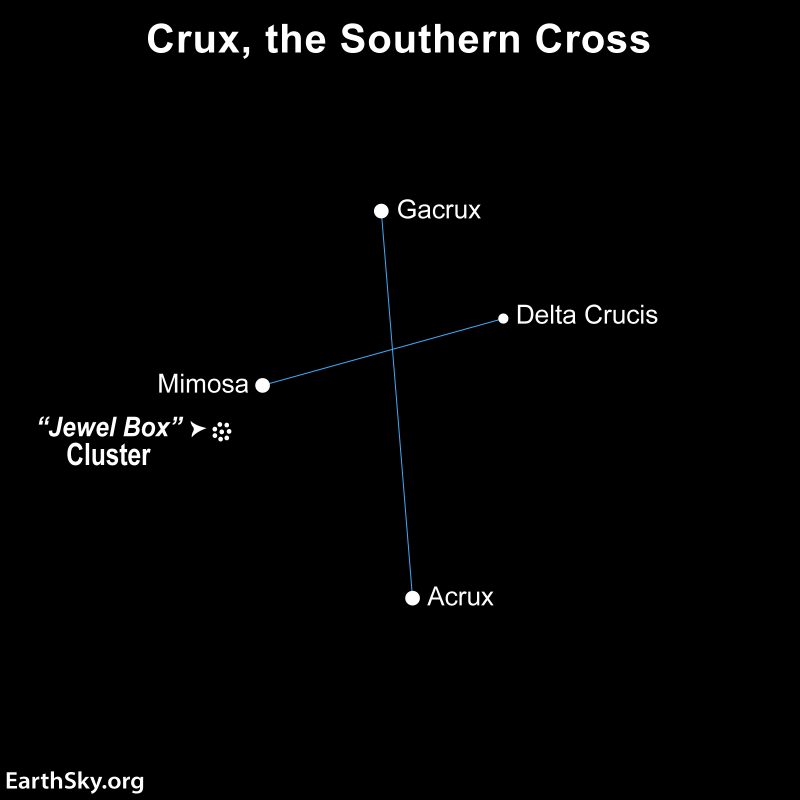
Image Credit: Earthsky
Acrux is the brightest star in the Southern Cross
- Acrux is the brightest star in the constellation of the Southern Cross, officially known as Crux, and is the 13th brightest star in the sky.
- Located about 321 light-years from Earth, Acrux is actually a binary system consisting of two nearly identical B-class stars.
- To see Acrux and the Southern Cross, one needs to be south of about 27 degrees north latitude and ideally even farther south for better visibility.
- Acrux appears as a single star to the naked eye, but in a small telescope, it can be resolved into two stars.
- The Southern Cross can only be seen from the Southern Hemisphere, and its visibility improves the farther south you are on the globe.
- The star Acrux serves as the bottom marker of the Southern Cross constellation, and is visible every night of the year from locations around 27 degrees south latitude.
- Acrux is a subgiant star that is hotter, brighter, larger, and more massive than the Sun, and it will eventually evolve into a white dwarf star.
- The Southern Cross has historical significance, with images of it appearing on flags of various nations and provinces in the Southern Hemisphere.
- Despite the Southern Cross not exactly resembling a cross, it holds cultural importance and is well-known among those in the Southern Hemisphere.
- Observing the Southern Cross and Acrux can be a rewarding experience, especially when viewed from latitudes where they are visible in their entirety.
Read Full Article
6 Likes
Nasa
227
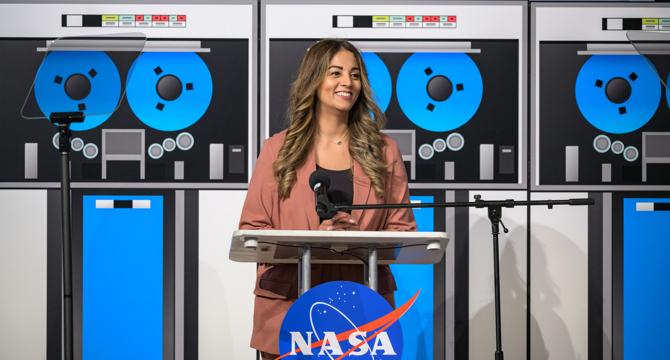
Image Credit: Nasa
Nilufar Ramji: Shaping Johnson’s Giant Leaps Forward
- Nilufar Ramji, a first-generation college graduate, is making significant contributions at NASA by shaping the messaging behind humanity's return to the Moon, Mars, and beyond.
- Currently serving as the co-executive producer for NASA's live broadcasts, Ramji ensures effective communication of the agency's missions and discoveries to the public.
- Previously, she led public affairs for Moon to Mars activities at NASA's Johnson Space Center and contributed to communication strategies for lunar missions with private companies.
- Ramji played a crucial role in communicating NASA's involvement in major lunar missions, such as Firefly Aerospace's Blue Ghost Mission 1 and Intuitive Machines' IM-2 mission.
- She emphasizes the importance of storytelling in inspiring and uniting humanity for space exploration, as highlighted in her TEDx Talk 'Storytelling from Space.'
- Ramji values mentorship and constructive criticism in her growth journey, recognizing the significance of stepping outside one's comfort zone.
- Her international career at the Aga Khan Foundation showcased her dedication to service and effective communication for positive change in underdeveloped communities.
- Ramji's transition to NASA led to her role as a public relations specialist, contributing to the agency's outreach efforts and shaping its storytelling.
- By collaborating and utilizing her diverse skill set, Ramji is actively contributing to NASA's mission of expanding humanity's knowledge of the universe.
- Her journey exemplifies NASA's commitment to pushing boundaries and fostering transparency to advance space exploration for the future.
Read Full Article
13 Likes
Discover more
Medium
227

Graphing the soul
- The mind is fragile, with one blow or event having the potential to cause irreversible change, redefining who we are instantly.
- Individuality may be temporary as we constantly shift to maintain balance and adapt to fit the moment, raising questions about the essence of our identity.
- Our opinions, values, and selves may depend on the axis of time, leading to the concept of different versions of ourselves at different moments, creating a dynamic graph of identity.
- If we are seen as variables in the equation of existence, there arises a notion that our purpose is to evolve and change, contributing to the continuity of the equation, emphasizing the significance of growth and adaptation to our identity.
Read Full Article
13 Likes
Nasa
222

Image Credit: Nasa
Sols 4529-4531: Honeycombs and Waffles… on Mars!
- NASA's Mars rover Curiosity recently captured images of polygonal shaped fractures with waffle or honeycomb patterns on Sol 4527, showcasing well-preserved geological features.
- The rover's workspace displayed raised ridges resembling honeycombs or waffles, extending up to 30 meters into the distance, adding to the intrigue of exploration.
- Efforts were made to analyze the composition of these ridges using instruments like APXS and ChemCam, aiming to understand the geological makeup of the terrain.
- Detailed imaging plans were made for the workspace, including Mahli focusing on a mosaic and Mastcam capturing images for analysis of fractures and layering in bedrock.
- In addition to close investigations, remote imaging of distant features like the boxwork fracture system and Texoli butte were scheduled for comprehensive data collection.
- Curiosity's environmental research continued with data collection on atmospheric conditions, dust levels, wind speeds, humidity, and other factors to enhance scientific understanding.
- The mission's multidisciplinary approach involving various instruments ensures a thorough examination of Mars' geological features and atmospheric characteristics to deepen knowledge.
- Excitement among the team is high as they anticipate uncovering insights into the origin and evolution of geological structures on Mars, enhancing the mission's scientific value.
- Despite the focus on geological exploration, Curiosity's data collection on environmental parameters remains vital for a holistic understanding of Mars' climate and conditions.
Read Full Article
13 Likes
Knowridge
245
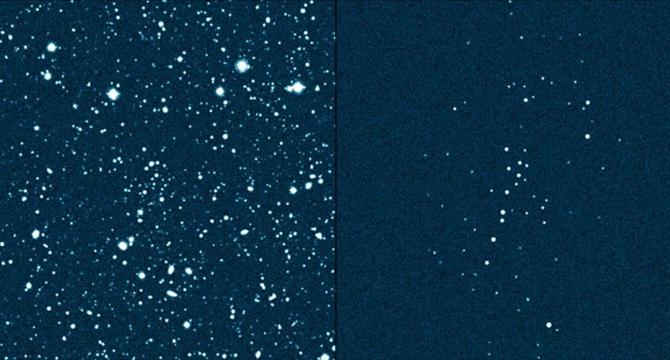
Image Credit: Knowridge
It’s either the Milky Way’s farthest known star cluster or the smallest known galaxy.
- UMa3/U1 is a celestial object that is either the Milky Way's farthest known star cluster or the smallest known galaxy.
- Distinguishing between galaxies and star clusters is not always clear, especially in the case of objects like UMa3/U1, which blurs the line between the two categories.
- UMa3/U1 could be the smallest and most dark matter-dominated galaxy if classified as a galaxy, or the oldest star cluster yet discovered if considered a star cluster.
- Recent studies suggest that UMa3/U1 is more likely a star cluster based on simulations of star motions and mass distribution, but further observations are needed for conclusive evidence.
Read Full Article
14 Likes
Spaceflightnow
147

SpaceX launch 28 Starlink satellites on 470th Falcon 9 rocket launch
- SpaceX launched 28 Starlink satellites on its 470th Falcon 9 rocket launch.
- The launch occurred at 9:17 p.m. EDT from Space Launch Complex 40 at Cape Canaveral Space Force Station.
- The first stage booster, tail number 1085, successfully landed on the droneship 'Just Read the Instructions'.
- This mission added 28 more satellites to SpaceX's constellation of over 7,300 currently in orbit.
Read Full Article
8 Likes
Digitaltrends
441

Image Credit: Digitaltrends
SpaceX gives slow TV a cosmic twist
- SpaceX has shared a four-hour slow TV video from its Crew Dragon capsule during the recent Fram2 mission, offering viewers a meditative distraction.
- The video shows the first human spaceflight over Earth’s poles, with non-professional astronauts enjoying amazing views from the capsule.
- The Crew Dragon featured a glass dome instead of the docking adapter, allowing the crew to peer out and experience awesome views of Earth and beyond.
- Slow TV, a calming genre of television with long broadcasts of ordinary events, has gained popularity for its contemplative and immersive nature, offering viewers a unique experience.
Read Full Article
26 Likes
Brighter Side of News
280

Image Credit: Brighter Side of News
Scientists link dark energy to alien life in the multiverse
- Astronomers explore mysteries such as galaxy formation and dark energy's role in the Universe.
- Durham University researchers introduce a model estimating the likelihood of intelligent life across multiverses.
- The model connects dark energy density and star formation rates to the emergence of life.
- Studies suggest that a higher dark energy density may lead to more efficient star formation.
- Research challenges the idea that our Universe is the most favorable for life to develop.
- Parallel universes and the concept of unique physical constants are explored in the study.
- Anthropic reasoning and stochastic inflation models provide a statistical framework for understanding different universes.
- Scientists aim to identify universal parameters that support life across various universes.
- The study expands knowledge in astrophysics, cosmology, and the search for extraterrestrial life.
- Exploring the Universe's fine-tuning and comparison to hypothetical multiverses are key research goals.
Read Full Article
16 Likes
Livescience
401
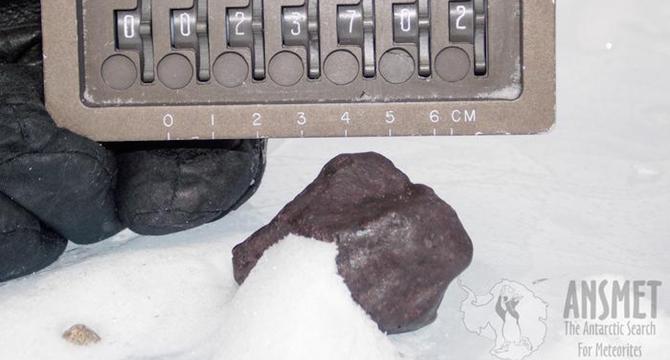
Image Credit: Livescience
Earth may not have gotten its water how we thought, controversial meteorite study suggests
- A controversial study suggests Earth's water may have come from hydrogen sulfide in a meteorite rather than asteroid collisions.
- Enstatite chondrites, similar to Earth's composition, were found to contain abundant hydrogen, potentially forming water when reacting with oxygen.
- The study challenges the previous belief that Earth's water primarily came from outer solar system objects colliding with Earth.
- While some scientists remain skeptical due to possible contamination, this discovery could impact the understanding of habitable conditions in solar systems.
Read Full Article
24 Likes
Medium
428

Image Credit: Medium
NASA’s Budget Slash: Why Europe and the UK Need to Step Up by 2028
- NASA faces a 24% budget cut, prompting concerns for ESA and the UK to take initiative in space endeavors by 2028.
- The budget reduction could impact joint missions and collaborations, putting Europe's space aspirations at risk.
- ESA’s investments in crucial spacecraft elements like the Orion module and Mars missions are threatened by NASA's budget slashes.
- Joint projects, job opportunities, and growth in the European space sector are jeopardized by potential setbacks.
- Europe needs to secure its own access to space as NASA's cutbacks highlight the importance of self-reliance in the space industry.
- With Europa's Ariane 6 and UK spaceports, there's potential to fill the gaps left by NASA's budget cuts and lead the space race.
- Europe should prioritize high-impact missions, establish strategic partnerships, and invest in private space ventures to ensure space dominance by 2028.
- To achieve long-term resilience and leadership in the post-NASA-shakeup era, Europe and the UK require strategic reforms in space governance and funding.
- The formation of a National Space Council and a European Space Resilience Fund are proposed to enhance coordination and address funding uncertainties.
- Collaboration between ESA and NATO, alongside launching high-priority payloads from European soil, is recommended for bolstering Europe's space capabilities.
- Investing in space startups, implementing an investment guarantee program, and enacting legislation are key steps for Europe and the UK to attain space leadership by 2028.
Read Full Article
25 Likes
Nasa
151

Image Credit: Nasa
Searching for Spherules to Sample
- Perseverance rover has been investigating spherules in the Witch Hazel Hill region of Mars, with clusters of these small bubble-shaped stones found at various locations along its traverse.
- Spherules were first spotted by instruments like Mastcam-Z and SuperCam, presenting different characteristics in terms of density and composition across different outcrops.
- Distinct spherule features were observed at locations such as St. Pauls Bay, Mattie Mitchell, Wreck Apple, Sally's Cove, and Dennis Pond, revealing variations in size and distribution within rocks.
- Due to accessibility challenges at certain outcrops, the team decided to perform an abrasion at the Pine Pond outcrop to examine spherules within the rock interior at Hare Bay.
- Hypotheses for the spherules' origin include volcanic activity or impact-related processes, prompting the team to focus on collecting a sample to analyze their composition and structure further.
- Laboratory analyses of the spherules could provide insights into Mars' geological history, shedding light on the formation and transformation of its surface over billions of years.
- The Perseverance mission aims to solve the mystery surrounding when, where, and how these spherules were formed, contributing to a deeper understanding of Martian geology.
Read Full Article
9 Likes
Nasa
254
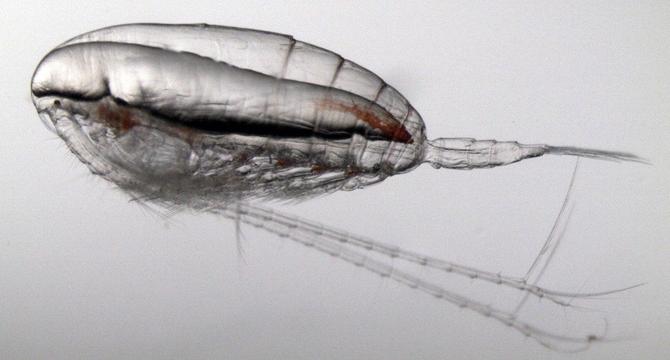
Image Credit: Nasa
NASA Data Helps Map Tiny Plankton That Feed Giant Right Whales
- NASA satellite data is being used to track tiny zooplankton called Calanus finmarchicus, which are crucial for North Atlantic right whales' survival.
- By detecting swarms of Calanus at the ocean surface in the Gulf of Maine, researchers hope to better estimate feeding grounds for whales and reduce threats like vessel strikes and fishing gear entanglements.
- This approach utilizes data from NASA's Aqua satellite's Moderate Resolution Imaging Spectroradiometer to detect subtle changes in ocean color caused by zooplankton pigments.
- The study, funded in part by NASA's Early Career Research Program, aims to connect space-based observations with real-world challenges for science and ecosystem conservation.
- The satellite-based method for tracking zooplankton could help identify unknown whale feeding grounds and facilitate more efficient operation of shipping and fishing industries.
- With the launch of the PACE satellite, improvements in detecting zooplankton are expected, providing finer detail and better insights into ocean ecosystems.
- Despite current limitations in the method, such as potential misidentification of small organisms and weather interference, the PACE satellite is anticipated to enhance zooplankton detection capabilities.
- Understanding North Atlantic right whales' elusive behavior and feeding patterns is crucial for their conservation, especially in light of increased mortalities due to vessel strikes and fishing gear entanglements.
- Scientists are optimistic that combining satellite data with local knowledge of plankton patterns will offer valuable insights to aid decision-making and protect whale populations.
- The use of satellite technology in tracking zooplankton highlights the intersection of space science with marine conservation efforts, showcasing the potential for innovative solutions to ecological challenges.
Read Full Article
15 Likes
Nasa
111
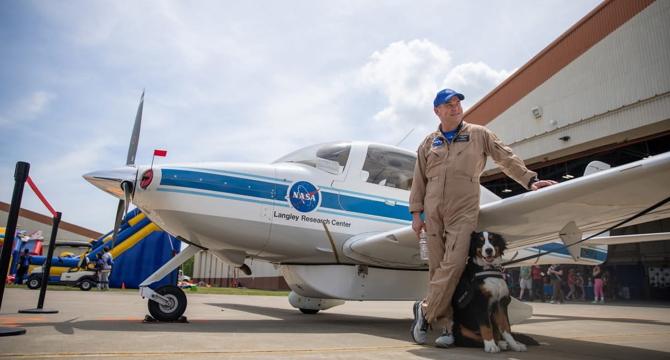
Image Credit: Nasa
NASA Langley Participates in Air Power Over Hampton Roads
- NASA Langley participated in the Air Power Over Hampton Roads air show, showcasing its Cirrus Design SR22 research aircraft.
- The event included a STEM Day where Langley's Office of STEM Engagement provided educational activities for K-12 students to explore science and technology.
- NASA experts engaged with visitors, allowing them to experience flight dynamics, design airplanes, and learn about STEM career paths.
- The air show highlighted NASA Langley's aviation legacy and partnership with Joint Base Langley-Eustis in advancing aeronautics and space technology.
Read Full Article
6 Likes
For uninterrupted reading, download the app